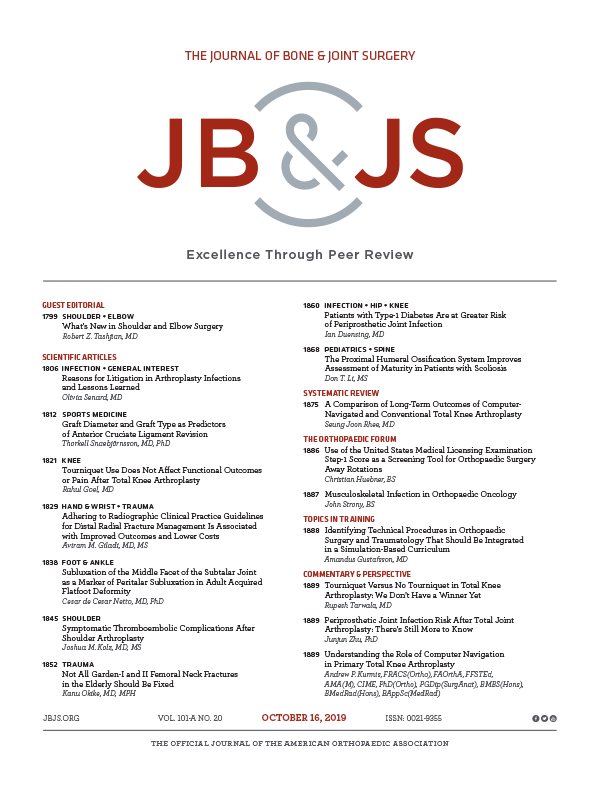
1-3 week immobilization period following distal radius fracture improves early function vs 6 weeks

1-3 week immobilization period following distal radius fracture improves early function vs 6 weeks
A Comparison of the Effect of One, Three, or Six Weeks of Immobilization on Function and Pain After Open Reduction and Internal Fixation of Distal Radial Fractures in Adults: A Randomized Controlled Trial
J Bone Joint Surg Am. 2018 Jul 5;100(13):1118-1125. doi: 10.2106/JBJS.17.00912Synopsis
133 patients with a distal radius fracture scheduled for open reduction and internal fixation with a volar plate were randomized to a postoperative immobilization period for 1 week, 3 weeks, or 6 weeks. Primary outcomes included wrist function, pain, and range of motion in wrist extension and forearm supination. Follow-up was performed at 6 weeks, 12 weeks, and 26 weeks postoperatively. Results de...
To view the full content, login to your account,
or start your 30-day FREE Trial today.
FREE TRIAL
LOGIN
Forgot Password?
Explore some of our unlocked ACE Reports below!

Learn about our AI Driven
High Impact Search Feature
Our AI driven High Impact metric calculates the impact an article will have by considering both the publishing journal and the content of the article itself. Built using the latest advances in natural language processing, OE High Impact predicts an article’s future number of citations better than impact factor alone.
Continue



 LOGIN
LOGIN

Join the Conversation
Please Login or Join to leave comments.